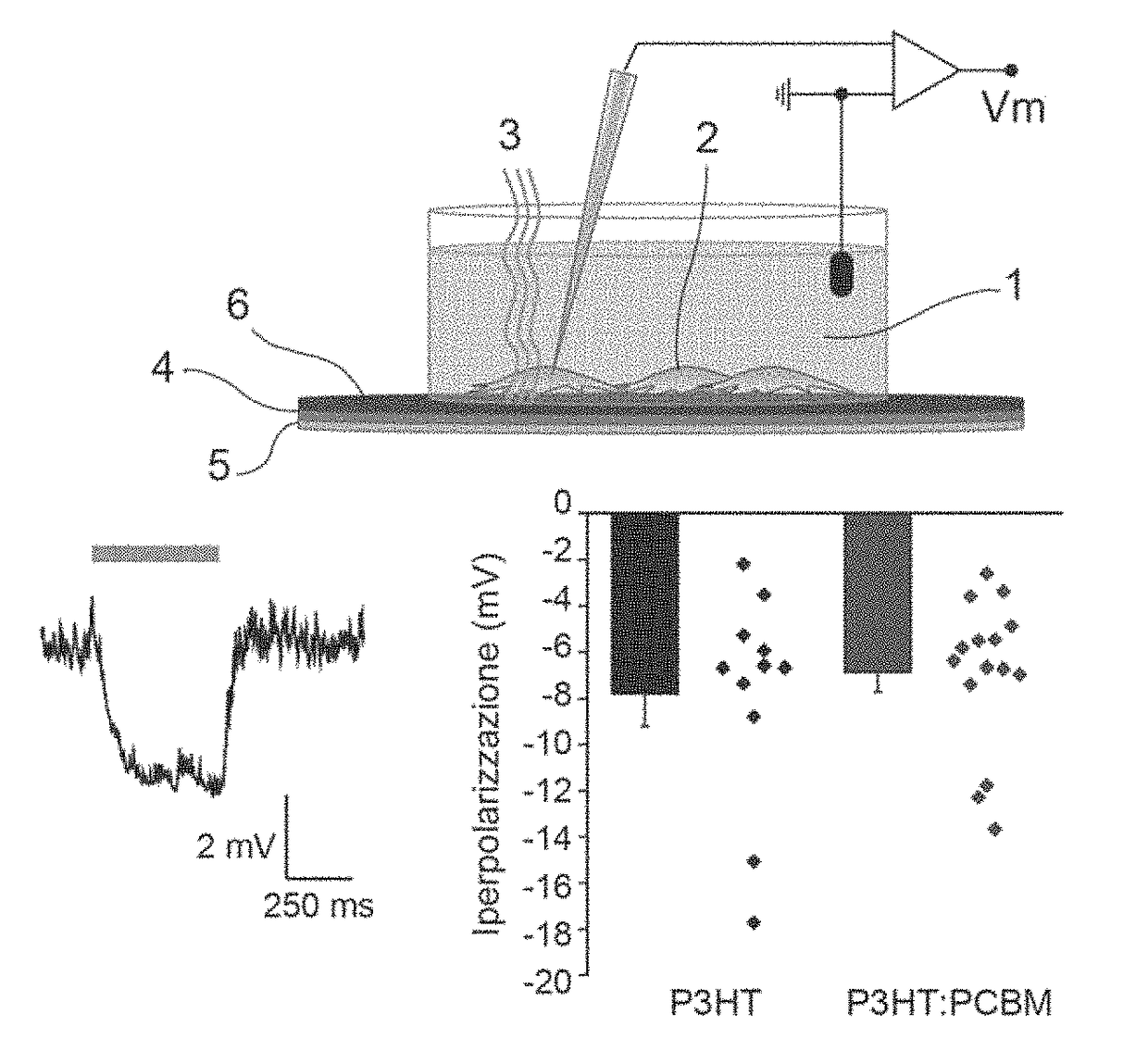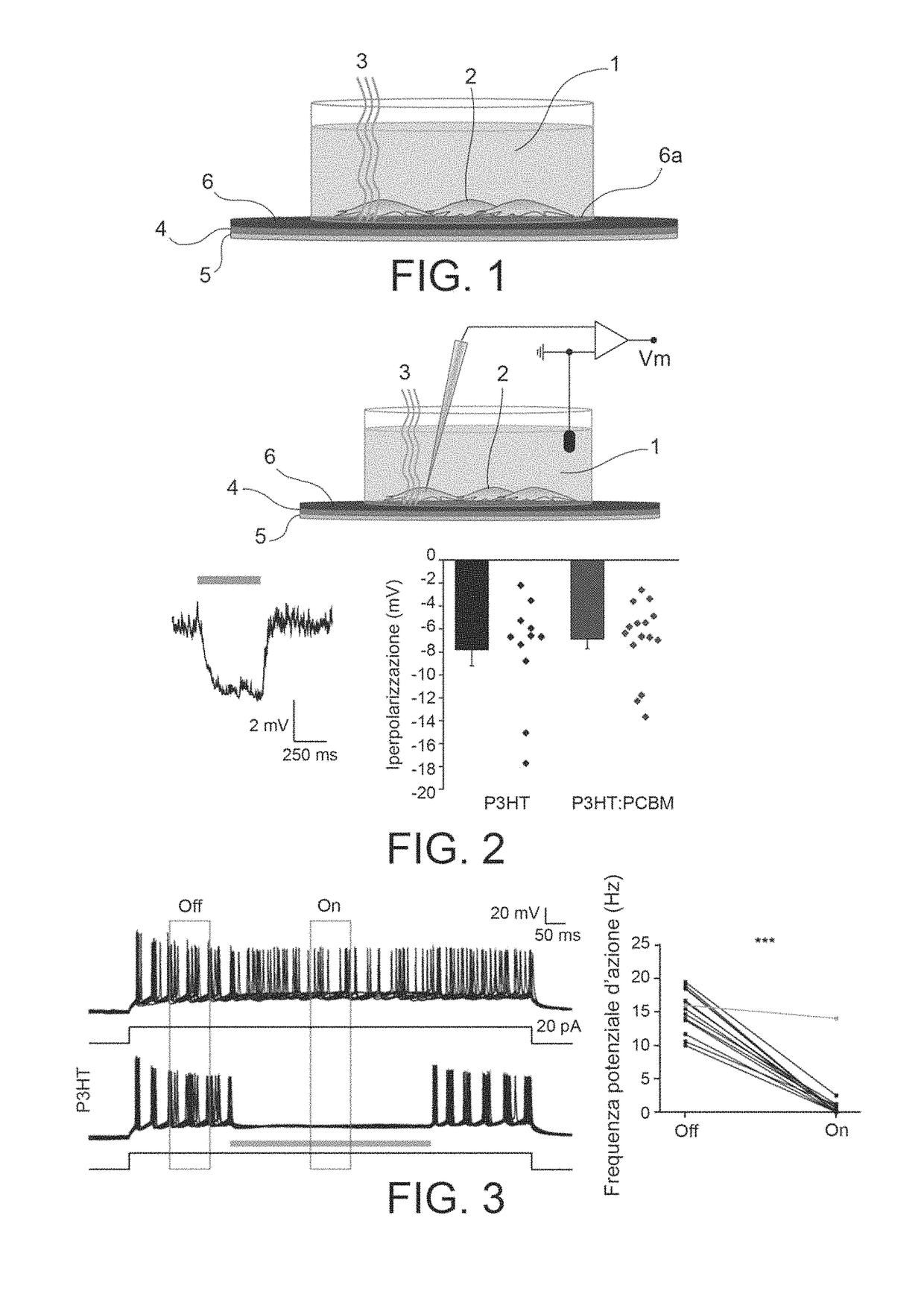Organic devices for the photoinhibition of excitable cells
- Summary
- Abstract
- Description
- Claims
- Application Information
AI Technical Summary
Benefits of technology
Problems solved by technology
Method used
Image
Examples
Embodiment Construction
[0015]FIG. 1 illustrates diagrammatically a device according to the invention in an experimental configuration for applications in vitro, in which a culture of excitable cells 2, immersed in an electrolyte solution 1, is caused to grow on the device. For the purposes of this invention, by excitable cell is conventionally meant a cell capable of providing an active electrical response (i.e. excitation of the membrane) following the application of an external electrical stimulus when that stimulus exceeds a threshold potential for the membrane. Excitable cells are, for example, nerve cells and muscle cells.
[0016]In particular it will be seen in FIG. 1 that the device according to the invention consists of a photoreactive film comprising several layers 4, 6 and supported by a planar substrate of insulating material 5. All the layers of the photoreactive film and the substrate are therefore in general made of non-conducting material.
[0017]The photoreactive film has an interface surface ...
PUM
| Property | Measurement | Unit |
|---|---|---|
| Diameter | aaaaa | aaaaa |
| Diameter | aaaaa | aaaaa |
| Diameter | aaaaa | aaaaa |
Abstract
Description
Claims
Application Information
 Login to View More
Login to View More - R&D
- Intellectual Property
- Life Sciences
- Materials
- Tech Scout
- Unparalleled Data Quality
- Higher Quality Content
- 60% Fewer Hallucinations
Browse by: Latest US Patents, China's latest patents, Technical Efficacy Thesaurus, Application Domain, Technology Topic, Popular Technical Reports.
© 2025 PatSnap. All rights reserved.Legal|Privacy policy|Modern Slavery Act Transparency Statement|Sitemap|About US| Contact US: help@patsnap.com


